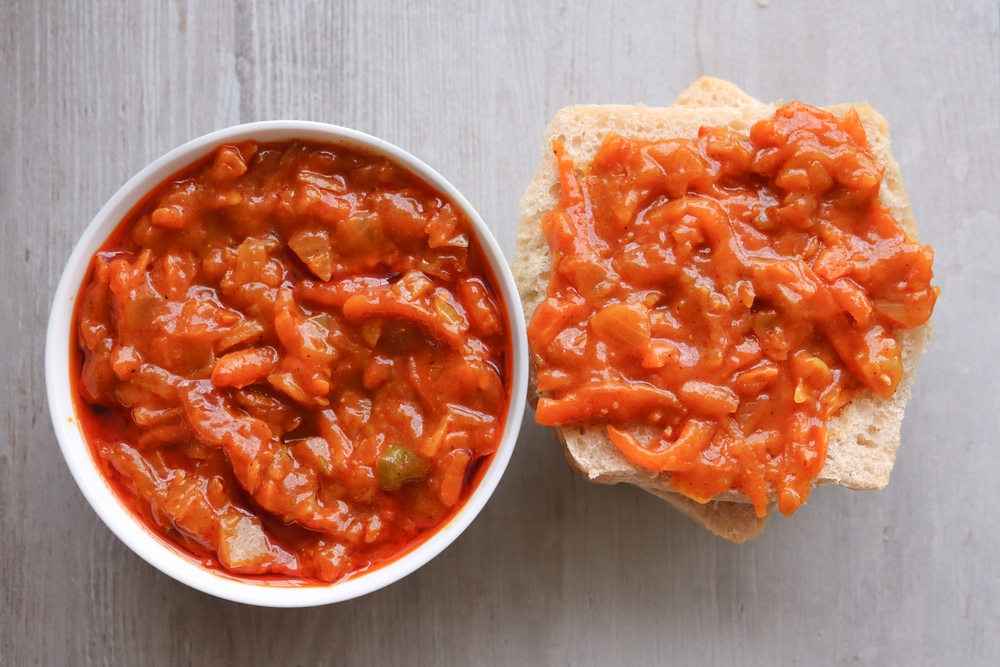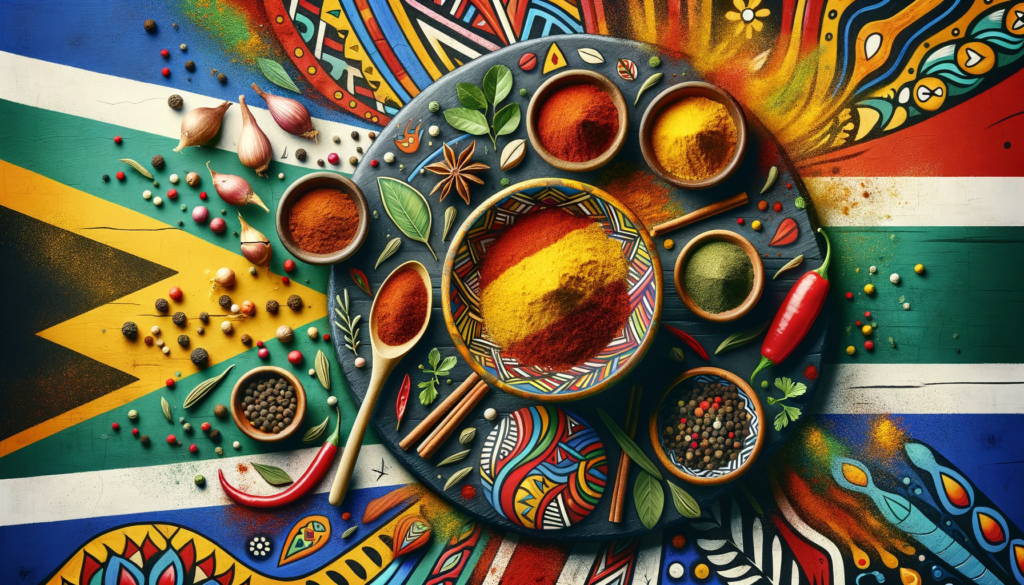Chakalaka Spice: A Blend of South African Heritage
The Rich Flavor Profile of Chakalaka Spice
Chakalaka spice is a harmonious blend that captures the vibrancy and diversity of South African flavors. Crafted from a mix of aromatic ingredients such as paprika, cumin, coriander, turmeric, fennel, ginger, cinnamon, and fiery chilies, this spice mix is known for its robust taste and versatility. It offers a balanced heat that is both warming and palate-pleasing, while its bold aroma is reminiscent of open-air markets and rich culinary traditions. Each spoonful of Chakalaka spice transcends simple seasoning, imbuing dishes with a burst of color and a flavor that resonates with the soul of South Africa.
Historical and Cultural Roots of Chakalaka in South Africa
The origins of Chakalaka are as colorful as the spice itself. Steeped in South African history, Chakalaka is said to have first been prepared in the townships, a fusion of Indian influences brought by immigrants and the indigenous tastes of the Bantu peoples. This spice blend has been passed down through generations and has become a symbol of culinary resistance and celebration. It represents the spirit of unity and creativity—a homage to the ability to create something joyous and delicious amidst adversity. Its name, often theorized to mimic the sound of a busy Johannesburg cityscape, echoes through every kitchen that holds this cherished spice blend.
Chakalaka Spice in Traditional South African Cooking
The Classic Chakalaka Dish and Its Variations
The classic Chakalaka dish, a spicy vegetable relish usually made with tomatoes, peppers, carrots, beans, and, of course, the signature Chakalaka spice, is a staple at South African gatherings. Over time, various adaptations have emerged, each household adding its own twist. Some might introduce cabbage or cauliflower, while others might add a splash of tangy vinegar or a spoonful of sweet chutney. The dish is often enjoyed as a side to pap, a traditional maize porridge, or with braaied (barbecued) meats, demonstrating its incredible adaptability to different tastes and textures.
Diverse Culinary Uses of Chakalaka Spice in South African Cuisine
Chakalaka spice transcends its namesake dish, finding its way into many South African recipes. It’s a spice that does not simply complement but enhances, making it a treasured addition to anything from stews and soups to marinades and rubs. Chakalaka-flavored biltong, a form of dried, cured meat, is a testament to its cherished status. Bakers might also sprinkle this zesty blend into bread dough or savory pastries, offering an instant transformation into something exquisitely South African. The spice’s versatility is only limited by the extent of one’s culinary imagination.

Crafting and Cooking with Chakalaka Spice at Home
How to Make Your Own Chakalaka Spice Blend
The creation of a homemade Chakalaka spice blend begins with sourcing quality ingredients. Once gathered, toasting whole spices before grinding can elevate their flavors. Combine equal parts of the paprika, cumin, and coriander with half measures of turmeric, fennel, and cinnamon. Add ginger and chili to taste—remember, Chakalaka is known for its heat. After mixing thoroughly, store your blend in an airtight container, away from direct sunlight. This not only ensures freshness but also allows the flavors to meld over time, resulting in a more rounded and harmonious taste.
Creative Ways to Incorporate Chakalaka Spice in Everyday Meals
Incorporating Chakalaka spice into daily cooking is an adventure for the palate. Add it to your breakfast scramble or omelette for an awakening burst of flavor. At lunch, consider dusting it over avocado toast or stirring it into mayonnaise for a spicy sandwich spread. Come dinner, Chakalaka spice can transform grilling, whether rubbed onto chicken, fish, or vegetables. Even in simple rice or grain dishes, this spice blend can act as a primary flavor agent, effortlessly elevating the ordinary to extraordinary. Experimentation is key, and with Chakalaka spice, each meal becomes a chance to celebrate South African zest for life.
The Global Journey of Chakalaka Spice
Chakalaka Spice in World Cuisine
The effervescent energy of Chakalaka spice has not been confined to South African borders. It’s global journey is marked by its presence in kitchens worldwide, from Europe to the Americas and beyond. Internationally, Chakalaka finds affinity with Creole and Cajun spice mixes, sometimes being used interchangeably. It has appeared in fusion restaurants, being utilized by innovative chefs who appreciate its unique flavor profile. These chefs recognize the potential Chakalaka spice has in creating a culinary bridge between cultures, making it a favorite for modern, global cuisine.
Fusion Dishes Inspired by the Vibrant Flavors of Chakalaka
Fusion cuisine represents the blending of culinary worlds, and Chakalaka spice is a muse for chefs experimenting with such innovative dishes. Its flavors harmonize well with Asian-inspired stir-fries or can add depth to Mediterranean stews. Contemporary food trucks might offer a Chakalaka-spiced taco, merging Mexican and South African flavors. Even in Italian-inspired dishes, such as risottos or pastas, a pinch of Chakalaka can introduce an unexpected but welcome twist to the flavor narrative. This versatility in fusion cooking illustrates the spice’s universal appeal and adaptability.

Savoring South Africa’s Culinary Delights
Authentic South African Recipes Featuring Chakalaka Spice
Authentic South African cuisine is a celebration of flavor, and few things represent this as well as recipes featuring Chakalaka spice. One such recipe is bobotie, a deliciously spiced minced meat dish topped with an egg-based golden crust. The addition of Chakalaka spice to this Cape Malay classic adds both heartiness and heat. Another treasure is potjiekos, a traditional slow-cooked stew; enhanced with Chakalaka spice, it becomes a testament to the spice’s ability to marry flavors over hours of simmering. Discovering these recipes is a culinary journey, inviting all food lovers to partake in South Africa’s rich gastronomy.
Modern Interpretations of South African Classics
Chefs and home cooks around the globe are taking South African classics and infusing them with contemporary flair, often with Chakalaka spice as their secret weapon. Modern takes on vetkoek (fried dough balls) filled with Chakalaka-spiced mince speak to this trend, illustrating how traditional dishes are being reimagined. Bunny chow, a hollowed-out loaf of bread filled with spicy curry, can be elevated by substituting typical curry powder with Chakalaka spice for a uniquely South African twist. Reinventing classics in this way maintains culinary heritage while propelling it into new and exciting territories.
Chakalaka Spice in South African Cuisine: FAQs
What is Chakalaka spice made of?
Chakalaka spice is a vibrant blend of several spices that commonly includes paprika, cumin, coriander, turmeric, fennel, ginger, cinnamon, and various types of chilies. Some variations may include additional spices or adjust the ratios to create a milder or hotter flavor profile, depending on personal preference or traditional family recipes. This blend is the essence of what gives Chakalaka its distinctive, spicy, and aromatic flavor. While the underlying spices are widely used, the unique combination is what sets it apart as a South African favorite.
Can Chakalaka spice be used in vegetarian and vegan dishes?
Absolutely! Chakalaka spice is perfectly suitable for vegetarian and vegan dishes. It can add depth and heat to plant-based meals such as stews, roasted vegetables, legumes, and grains. Using Chakalaka spice in these dishes brings the bold flavors of South African cuisine to vegetarian and vegan diets, making it a versatile and invaluable spice blend for enriching a variety of recipes without the need for animal products.
What are the health benefits of using Chakalaka spice?
Chakalaka spice blend comprises various spices that are known for their health benefits. For example, turmeric contains curcumin, which has anti-inflammatory and antioxidant properties. Cumin may aid in digestion and improve immune function, while chilies are rich in vitamin C and may boost metabolic rate. It’s important to enjoy Chakalaka spice in moderation as part of a balanced diet to reap the benefits of these spices fully.
How spicy is Chakalaka spice, and can you adjust its heat level?
Chakalaka spice typically offers a medium to hot level of spiciness — it’s meant to bring warmth and zest to dishes without overwhelming the palate. However, the heat can certainly be adjusted to suit individual tastes. To lower the spice level, reduce the amount of chili powder or use milder chilies. Conversely, for those who relish fiery flavors, increase the ratio of chilies or include hotter varieties. Customizing your own Chakalaka blend allows you to control the spice to your preferred heat level.
Is Chakalaka spice blend available outside South Africa?
Yes, Chakalaka spice blend has spread beyond the borders of South Africa and can be found in various specialty grocery stores, spice shops, and online retailers worldwide. Its growing popularity has made it more accessible globally. Additionally, with the recipe for the spice blend being readily available, many home cooks outside South Africa enjoy creating their own Chakalaka spice mix at home.
Can Chakalaka spice be used in sweet dishes?
While Chakalaka spice is traditionally used in savory dishes, its aromatic elements can add an interesting twist to sweet dishes too. Consider using a pinch in desserts that pair well with warm spices, such as pumpkin pie, fruit crisps, or spiced hot chocolate. The key is to use a light hand and balance the heat with the sweetness of the dish to create a harmonious flavor profile.
How should Chakalaka spice be stored to maintain its freshness?
To preserve the flavors of Chakalaka spice, it should be stored in an airtight container to prevent exposure to moisture, heat, and light. A cool, dark place like a pantry or cupboard is ideal. Properly stored, the spice blend can maintain its potency for several months. Over time, the flavors may diminish, so it’s best to make small batches that can be used within a few months, ensuring freshness and vibrancy in your dishes.
